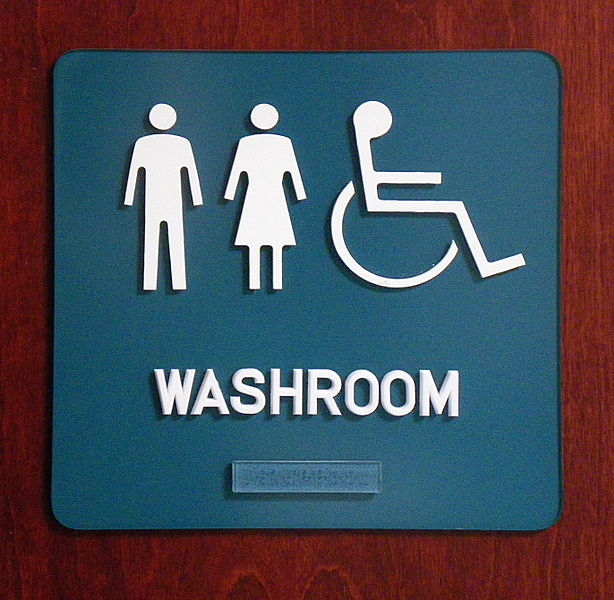Braille signage and accessibility
Contents |
[edit] Introduction
Developers, designers and owners of buildings have a responsibility to ensure that the built environment is accessible to everyone, wherever it is practical and reasonable to do so. This includes anyone with a visual impairment, whether permanent or temporary.
Whilst the accessible design of buildings is regulated by the Building Regulations Part M: Access to and use of buildings, the Equality Act requires "reasonable adjustments" to be made when providing access to goods, facilities, services and premises. The purpose of this is to ensure that buildings are accessible and usable and that individuals, regardless of their age, gender or disability are able to, ‘...gain access to buildings and to gain access within buildings and use their facilities, both as visitors and as people who live and work in them.’
[edit] Braille messaging for visual assistance
With regard to making reasonable adjustments to premises for people living with sight loss, the Equality and Human Rights Commission suggests, 'An employer makes structural or other physical changes...or provides appropriate contrast in decor to help the safe mobility of a visually impaired person.'
In addition to colour contrasts inside buildings, braille signage can provide a level of accessibility for people who use this system of raised dots in order to read with their fingers. This tactile method is sometimes used for labelling objects in the workplace. Braille signage can provide simple instructions in places such as lifts or toilets - when colour or lighting are not suitable methods of relaying information. They can also identify hazards in the facility.
Other common applications for braille signage can include directional arrows, room identification plaques, building zones (particularly in large buildings such as hospitals), exit doors, maps and other aspects of a building that are typically part of wayfinding systems. The Sensory Trust stresses the importance of consistent placement of braille messages and signage, particularly at lifts and on doors. Tactile maps in particular can be helpful for visually impaired visitors to assess the layout and scale of a building.
Braille messaging is also found outside of buildings. Most commonly it is used on cash machines, at pedestrian crossings and so on.
The Sensory Trust suggests alerting visually impaired visitors to the presence of signs by use of textured path surfaces. Since not all visually impaired people will travel independently outdoors, it useful to include braille on standard information and safety signage for all users.
[edit] Additional guidance on lifts
BS 8300 recommends that multi-storey buildings provide at least one accessible lift for wheelchair users.Design requirements for lifts include; minimum space requirements, placement of controls, access to the lift car, a control panel that contrasts with decorations, visually distinctive landings and car doors, and the use of mirrors to provide a visual aid for reversing wheelchairs. Further regulations require the inclusion of tactile control buttons and braille signage in lifts to provide better access for users with visual disabilities.
As a result of the Equality Act, organisations have made additional tactile adjustments for visually impaired employees, visitors or members of the public as an inclusivity measure. These tactile approaches are a proactive method of support for people with visual impairments who may prefer to navigate in and around facilities with as much independence as possible.
[edit] Related articles on Designing Buildings Wiki
- Accessibility in the built environment.
- Approved document M.
- Building signage.
- Disability Discrimination Act DDA.
- Disabled access lifts.
- Equality Act.
- Inclusive design.
- Legibility.
- Lifts for buildings.
- Wayfinding.
[edit] External resources
- Sensory Trust, Designing with braille.
Featured articles and news
RTPI leader to become new CIOB Chief Executive Officer
Dr Victoria Hills MRTPI, FICE to take over after Caroline Gumble’s departure.
Social and affordable housing, a long term plan for delivery
The “Delivering a Decade of Renewal for Social and Affordable Housing” strategy sets out future path.
A change to adoptive architecture
Effects of global weather warming on architectural detailing, material choice and human interaction.
The proposed publicly owned and backed subsidiary of Homes England, to facilitate new homes.
How big is the problem and what can we do to mitigate the effects?
Overheating guidance and tools for building designers
A number of cool guides to help with the heat.
The UK's Modern Industrial Strategy: A 10 year plan
Previous consultation criticism, current key elements and general support with some persisting reservations.
Building Safety Regulator reforms
New roles, new staff and a new fast track service pave the way for a single construction regulator.
Architectural Technologist CPDs and Communications
CIAT CPD… and how you can do it!
Cooling centres and cool spaces
Managing extreme heat in cities by directing the public to places for heat stress relief and water sources.
Winter gardens: A brief history and warm variations
Extending the season with glass in different forms and terms.
Restoring Great Yarmouth's Winter Gardens
Transforming one of the least sustainable constructions imaginable.
Construction Skills Mission Board launch sector drive
Newly formed government and industry collaboration set strategy for recruiting an additional 100,000 construction workers a year.
New Architects Code comes into effect in September 2025
ARB Architects Code of Conduct and Practice available with ongoing consultation regarding guidance.
Welsh Skills Body (Medr) launches ambitious plan
The new skills body brings together funding and regulation of tertiary education and research for the devolved nation.
Paul Gandy FCIOB announced as next CIOB President
Former Tilbury Douglas CEO takes helm.
UK Infrastructure: A 10 Year Strategy. In brief with reactions
With the National Infrastructure and Service Transformation Authority (NISTA).























